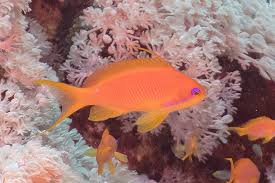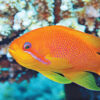The Dragon in the Artworks of Chinese Emperors: A Symbol of Power and Divinity

The dragon is one of the most iconic symbols in Chinese culture, and its role in art and imperial iconography has evolved over millennia. Throughout Chinese history, particularly during the imperial era, the dragon has been more than just a mythical creature—it has been a representation of imperial power, divine right, and cosmic harmony. In the works of art commissioned by Chinese emperors, dragons often appear as symbols of the emperor’s authority, wisdom, and connection to the divine.
From ancient imperial palaces to intricate jade carvings, and from imperial robes to architectural elements, the dragon is woven throughout the art and cultural heritage of China. This article explores the profound relationship between dragons and the artworks of Chinese emperors, examining how the dragon’s symbolism evolved and how it was used to convey imperial power, legitimacy, and divine favor.
The Dragon: Symbolism and Significance in Chinese Culture
In Chinese mythology, the dragon (long, 龙) is a symbol of immense power, strength, and good fortune. Unlike the malevolent dragons of Western folklore, Chinese dragons are considered benevolent creatures, associated with water, rain, and fertility. They are believed to have the ability to control the elements, maintain cosmic balance, and protect the empire. These creatures are often depicted with long, serpentine bodies, antler-like horns, sharp claws, and a lion-like mane. The dragon’s connection to water and rain made it an important figure in agrarian societies, where rainfall was essential for crop growth.
In Chinese cosmology, the dragon embodies the forces of nature and is associated with the emperor, whose rule is seen as divinely ordained. The emperor, known as the “Son of Heaven” (Tianzi, 天子), was considered the earthly manifestation of the divine and the dragon was his celestial symbol. By associating himself with the dragon, the emperor asserted his divine right to rule and his role as the guardian of peace and prosperity for the people.
The association between dragons and imperial authority dates back to the early days of Chinese civilization. As early as the Shang dynasty (1600–1046 BCE), the dragon appeared in royal iconography and was linked to the legitimacy of the ruler. Over time, the dragon became one of the most prominent symbols in Chinese imperial art, used in everything from royal attire to architecture, furniture, and ceremonial objects.
The Dragon on Imperial Robes: A Sign of the Emperor’s Divine Authority
One of the most well-known and prominent depictions of the dragon in imperial China is found on the robes worn by emperors. During the Ming (1368–1644) and Qing (1644–1912) dynasties, the imperial robe (longpao, 龙袍) was one of the most important symbols of imperial power. These robes were richly embroidered with various motifs, but the most significant of these was the dragon. The dragon on the emperor’s robe was not just an aesthetic decoration—it was a statement of the emperor’s status as the ruler of the universe.
The most famous and prestigious of these robes featured a five-clawed dragon, which was exclusive to the emperor. The five-clawed dragon, symbolizing the ultimate power and celestial mandate, was forbidden to be worn by anyone other than the emperor himself. This exclusive symbol distinguished the emperor from all other officials and nobility in the empire, emphasizing his divine and unmatched position.
The dragon was embroidered with great detail on the robes, often surrounded by clouds, waves, and flames, which symbolized the emperor’s dominion over the elements and his divine ability to bring order and harmony to the world. These robes were worn during important state ceremonies, including imperial court sessions, banquets, and religious rites, reinforcing the emperor’s role as a divine ruler.
The Dragon in Imperial Architecture: The Forbidden City and Beyond
Imperial architecture in China was designed to reflect the emperor’s divine status, with the use of dragons prominently featured in many imperial structures. The Forbidden City in Beijing, the imperial palace of the Ming and Qing emperors, is one of the most famous examples of dragon symbolism in architecture. The palace is a sprawling complex of buildings, halls, and courtyards, designed to symbolize the emperor’s divine authority and his connection to heaven.
Dragons are intricately incorporated into the architectural details of the Forbidden City, with dragon motifs found in the roofs, columns, and gates. The roof tiles of many buildings feature images of dragons, reinforcing the connection between the imperial family and celestial power. In particular, the Hall of Supreme Harmony (Taihe Dian, 太和殿) in the Forbidden City, which was used for imperial ceremonies and important state events, features a large dragon motif on its roof. The dragon’s presence here symbolizes the emperor’s dominion over the earth and his connection to the heavens.
Beyond the Forbidden City, dragon motifs also appear in the gates and walls of various palaces and temples. These representations of the dragon are not merely decorative—they are a reminder of the emperor’s role as the ruler of both the physical and spiritual realms. The dragon in imperial architecture thus served as a constant visual reminder of the emperor’s celestial mandate and his responsibility to maintain harmony in the empire.
Dragons in Imperial Art and Ceramics
Chinese emperors were great patrons of the arts, commissioning works that would reflect their grandeur and divine right to rule. Dragons were a central theme in imperial art, and they were often depicted in a variety of mediums, including painting, jade carving, and porcelain.
During the Qing dynasty, under Emperor Kangxi (r. 1662–1722), the use of dragons in imperial art reached new heights. One of the most famous examples is the series of porcelain vases and plates that were created specifically for the emperor’s court. These pieces featured intricate depictions of dragons coiled around clouds or swimming through waves, symbolizing the emperor’s control over nature and the elements. The use of blue-and-white porcelain, in particular, became a hallmark of the Qing dynasty, and dragons were a frequent motif on this type of pottery.
Jade carvings, too, often featured dragons, as jade was considered a precious material that symbolized immortality and purity. These jade dragons were often placed in the emperor’s palace, serving as both decorative pieces and symbols of his power. The dragon’s connection to immortality was particularly important in imperial China, as it was believed that the emperor, as the “Son of Heaven,” would reign forever through the power of the dragon.
The Dragon in Imperial Court Paintings
In addition to its presence in physical objects, the dragon also appeared in imperial court paintings. The imperial court of China employed some of the finest artists, who created works of art to commemorate the emperor’s reign and to reflect his divine power. Dragons often featured prominently in these paintings, either as central figures or as part of larger mythological scenes.
The depiction of dragons in court paintings was not merely ornamental—it had deep symbolic meaning. Dragons in these paintings represented the emperor’s strength, wisdom, and divine favor. They were often shown in dynamic poses, signifying the emperor’s active role in maintaining order and balance in the empire. These paintings were not only meant to be admired for their artistic quality but also served as propaganda, reinforcing the emperor’s divine right to rule and his connection to the celestial realm.
The Dragon as a Symbol of Longevity and Prosperity
The dragon was also a symbol of longevity and prosperity, important themes for Chinese emperors who sought to maintain stable, flourishing reigns. The connection between the dragon and longevity was deeply ingrained in Chinese culture, and the emperor, as the dragon’s earthly representative, was believed to possess the divine power to ensure the prosperity and health of the empire.
In imperial art, dragons were often depicted alongside other symbols of longevity, such as the peach, the crane, and the tortoise. These combinations of symbols represented the emperor’s role in ensuring the continued flourishing of the dynasty, both during his lifetime and beyond. The dragon’s role as a symbol of eternal power and prosperity helped cement its place as the most important imperial symbol in Chinese history.
Conclusion
The dragon has played an essential role in Chinese imperial art for centuries, serving as a symbol of power, divinity, and cosmic order. Through its depiction on imperial robes, architecture, ceramics, and paintings, the dragon conveyed the emperor’s connection to the celestial and his responsibility to maintain harmony in the empire. The dragon’s role in the artwork of Chinese emperors was not merely decorative—it was an essential part of the emperor’s visual identity and an expression of his divine authority. Whether as a powerful emblem on imperial robes or as a motif in grand architectural structures, the dragon was a constant reminder of the emperor’s mandate to rule, ensuring the prosperity and longevity of the Chinese empire for generations to come.


